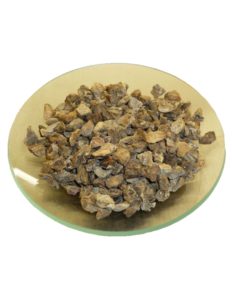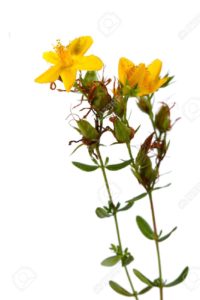Prohibited Herbs
Something about Prohibited Substances:
The Status of prohibited substances is changing all the time now with some of the herbs listed here no longer showing up on the official
ESNZ Clean Sport site so we recommend that you use this list as a word guide to find or eliminate any herbs in question.
I have made the font red for those that are definitely in the list of prohibited substances
Be aware that this list may have been updated since publication and is constantly changing. It is the competitors responsibility to make themselves fully aware of the rules.
NOTE: Hiralabs accepts no responsibility for the use and misuse of any herbal substances during competition and we recommend that ALL herbal remedies are discontinued at least 8 hours before an event : 8 hours stand down period for liquid extracts and 24 hours for Whole herb blends. For specific advice on this please contact us info@hiralabs.co.nz or by phoning 063450737.
ESNZ Clean Sport advises caution with the administration of herbal or natural medicinal preparations.
The use of herbal and natural products in a horse might result in an adverse analytical finding that violates the ESNZ Anti-Doping and Medication Control Rules. Herbal and natural medicinal products are classified as prohibited because of their potential actions on various body systems when administered.
Prohibited herbs as listed by ESNZ Clean Sport and copied (and edited in an effort to clarify any botanical anomalies) I have attempted to ensure that the common names are indeed what the ESNZ Clean Sport are the plants they are trying to convey by adding the botanical names and some of the active ingredients that may show up as metabolites. International norms require common names to be always accompanied by the botanical names. This is because a number of species share the same common name and this inaccuracy could have disastrous consequences. I have made up this table using the common names provided by ESCNZ Edited and added further information in an attempt to clear up any ambiguity:
| Common Name | Botanical Name | Comments |
| Valerian | Valeriana officinalis | Sedative. Valerinic acid is shared with rosemary which could also present with banned metabolites. |
| Kava | Piper methysticum | Sedative, psychoactive and increases dopamine levels Contains kavalactones,. Some ingredients shared with kawakawa. |
| Passion flower | Passiflora incarnata | Sedating. At a dosage of 10 mg/kg of the purified methanol extract, the anxiolytic effects were comparable to a 2 mg/kg of diazepam. The active constituent benzoflavone which reduce symptoms of withdrawal from, and addiction and dependence of benzodiazepines alcohol, morphine, nicotine and cannabis |
| Skullcap | Scutellaria. lateriflora, | Contains Baicalein one of the Scutellaria flavonoids. Sedating and anti-inflammatory shown to inhibit histamine properties. |
| Chamomile | Matricaria chamomilla | Sedating. Shares same ingredients as stinkweed Matricaria discoidea a common pasture weed. Chemical components have demonstrated anti-inflammatory,antihyperglycemic antigenotoxic and anticancer properties |
| Vervain |
|
Derivatives of ursolic acid and oleanolic acids anti –inflammatory and sedative. |
| Lemon balm | (Melissa officinalis | Sedating and anti-viral. Contains eugenol, tannins, and terpenes antithyrotropic activity, inhibiting TSH from attaching to TSH receptors, hence making it of possible use in the treatment of hyperthyroidism The major compound responsible for GABA transaminase inhibition activity was found to be rosmarinic acid Again rosemary. We have another plant that has similar action along with effectively slowing heart rate. |
| Devil’s claw | Harpagophytum procumbens | Has a anti Inflammatory, analgesic, sedative and diuretic properties. Harpagosides shared with a number of herbs. Again we have a number of plants that share similar active ingredients. |
| Leopards bane | Arnica montana | I think this is the plant ESNZ refer to but other plants called leopard’s balm are aconite, monkshood, wolf’s bane, women’s bane, Devil’s helmet or blue rocket. All toxic. Arnica is found in topical treatments for bruising and muscle sorenss. Internal only as a homeopathic substance. |
| Deadly nightshade | Atropa belladonna | The foliage and berries are extremely toxic, containing tropane alkaloids. These toxins include scopolamine and hyoscyamine, The drug atropine is derived from the plant. This plant is a common garden herb and horses will not eat it unless there is nothing else to eat or it is dried and mixed with hay. |
| hops | Humulus lupulus | Sedating. contains myrcene, humulene, xanthohumol, myrcenol,, linalool,, tannins, and resin. |
| Chaste Berry | Vitex agnus | Mildly relaxing due to its action on the adrenals and hormones. May help lower reactivity to sugars in grass. |
| Lavender | Lavendula sp. | Used as a relaxant. More suitable as an inhalant. Acts on the olfactory part of the brain. |
| Red poppy | Papaver somnifera? | Not clear in the original list |
| Green Tea | Camellia sinensis | Mild stimulant .May be included in list due to the slow release of caffeine. Wonderful garden plant grown as a hedge or as part of a shrub border. Horses will nibble on theses leaves if they can be reached over a fence. |
| Indian Snakeroot | Rauwolfia serpentine | Tranquillizer, lowers blood pressure and may help with mental disorders. Active ingredients include, reserpine, ajmaline, deserpidine, rescinnamine, serpentinine and yohimbine. The last one interesting because it shares identical ingredients to an African plant used for erectile disfunction. Pausinystalia yohimbe(Yohimbe), and is a protected species confined to Africa. |
| Comfrey | Symphytum officinale | Allantoin helps repair cells in the body. Treats ailments ranging from bronchial problems, broken bones, sprains, arthritis, gastric and varicose ulcers, severe burns, acne, skin condition, bone and teeth building properties. Constituents include mucilage, steroidal saponins, tannins, pyrrolizidine alkaloids, inulin, and proteins. , Pyrrolizidine alkaloids are thought to cause liver problems if taken for prolonged periods of time. |
| Hot chilles | Capsaicin | Analgesic due to altering the perception of pain by acting on the neuro-transmitter substance P. The higher the Scoville scale the more effective it is. Topical and ingested can be detected in a test. |
| St John’s wort | Hypericim perforatum | Sedative, behaviour modifier. I did not see this herb listed in the bulletin but heard that it is regarded as an environmental contaminant. It is commonly found in pastures. |
| Poppy (Flanders and/or opium | Papaver rhoeas or Papaver somniferum | Uncertain as to whether they mean P. rhoeas or P. Sominfera. Somnifera is the opium poppy containing alkaloids such as morphine, thebaine, codeine and oripavine are extracted. Morphine is the predominant alkaloid found in sominfera. They are also use in poppy seed toppings and muffins so don’t share these with your horse!Papaver rhoeas or Papaver somniferum |
| White Willow Salix sp. | Salicylates natural source of salicylic acid. Pain killer. Be aware that other species containthese metabolites too ie alders, poplars, birch. |
Our Comments
Herbs like chamomile have been added to the list in spite of the fact that a number of naturally occurring weeds contain the same active ingredients that will also show up should there be a test for it. Be aware that birches, alder and poplar also have salicylates.
Other banned environmental contaminants include theobromine one of the constituents of chocolate. So don’t feed your horse chocolate coated tit bits, M&Ms, Moro bars etc, leaves off your cocoa tree etc. Caffeine is found in a wide range of food stuffs but also be aware that if your chaff has come in bags that originally had coffee beans this will also show up in a test. Tests ONLY provide the presence of a banned substance it does not provide lower acceptable thresholds of a substance.
We do have the odd query over peppermint . While the main ingredient is menthol it does have a secondary ingredient hesperine which is found in cholesterol lowering drugs so we can’t be sure on that one either so if in doubt leave it out. So no Odd Fellows before an event.
Tide Over Herbs
What is a Tide-Over Herb?
These are herbs that effect changes to the body’s physiology and biochemistry over a longer period of time without leaving ‘evidence’ of metabolites should the horse be tested on the day.
Most of these herbs will act on the endocrine system and neurological pathways which will help reduce levels of cortisol and its subsequent cascade of effects.
If you want to know more about tide over herbs email us info@hiralabs.co.nz.
Herbs Not Yet Listed
We do have herbs that can be used that are not yet on the list. To get information on these email us info@hiralabs.co.nz







